Invented by Abhishek Pramod PATIL, George Cherian, Alfred Asterjadhi, Sai Yiu Duncan Ho, Lochan VERMA, Yanjun SUN, Qualcomm Inc
With the proliferation of smart devices, Internet of Things (IoT) applications, and the need for uninterrupted connectivity, traditional single-link communication systems often struggle to meet the requirements of modern users. Multi-link communication addresses this challenge by leveraging multiple communication links, such as Wi-Fi, cellular networks, and satellite connections, to ensure uninterrupted data transmission.
One of the key drivers of the multi-link communication market is the growing need for high-speed and reliable connectivity in various industries. For instance, in the transportation sector, multi-link communication enables real-time data transmission between vehicles, infrastructure, and traffic management systems, facilitating safer and more efficient transportation systems. Similarly, in the healthcare industry, multi-link communication ensures seamless connectivity for telemedicine applications, remote patient monitoring, and data transmission between medical devices.
Moreover, the rise of remote work and the increasing adoption of cloud-based applications have further fueled the demand for multi-link communication. As businesses rely on cloud services for critical operations, having a reliable and redundant network connection becomes crucial. Multi-link communication provides a fail-safe mechanism by automatically switching between different communication links in case of network failures or congestion, ensuring uninterrupted connectivity and minimizing downtime.
Furthermore, the advent of 5G technology has opened up new opportunities for multi-link communication. 5G networks offer higher bandwidth, lower latency, and increased capacity, making them ideal for multi-link communication applications. By combining 5G with other communication links, such as Wi-Fi 6 or satellite connections, users can achieve even higher data transmission speeds and improved network reliability.
The multi-link communication market is also witnessing advancements in software-defined networking (SDN) and network function virtualization (NFV) technologies. These technologies enable the dynamic allocation and management of communication links based on real-time network conditions and application requirements. By intelligently routing traffic across multiple links, SDN and NFV enhance network performance, optimize resource utilization, and improve overall user experience.
In terms of geographical adoption, the market for multi-link communication is witnessing significant growth across various regions. North America and Europe are leading the market, driven by the presence of major technology companies, increasing investments in IoT and smart city projects, and the need for reliable connectivity in critical industries. Asia Pacific is also emerging as a lucrative market, fueled by the rapid digitalization of various sectors and the growing adoption of IoT applications.
In conclusion, the market for multi-link communication is experiencing robust growth, driven by the increasing demand for seamless connectivity, enhanced data transmission capabilities, and the need for uninterrupted network connections. As industries continue to embrace digital transformation and rely on cloud-based applications, multi-link communication will play a vital role in ensuring reliable and efficient connectivity. With advancements in 5G, SDN, and NFV technologies, the multi-link communication market is poised for further expansion in the coming years.
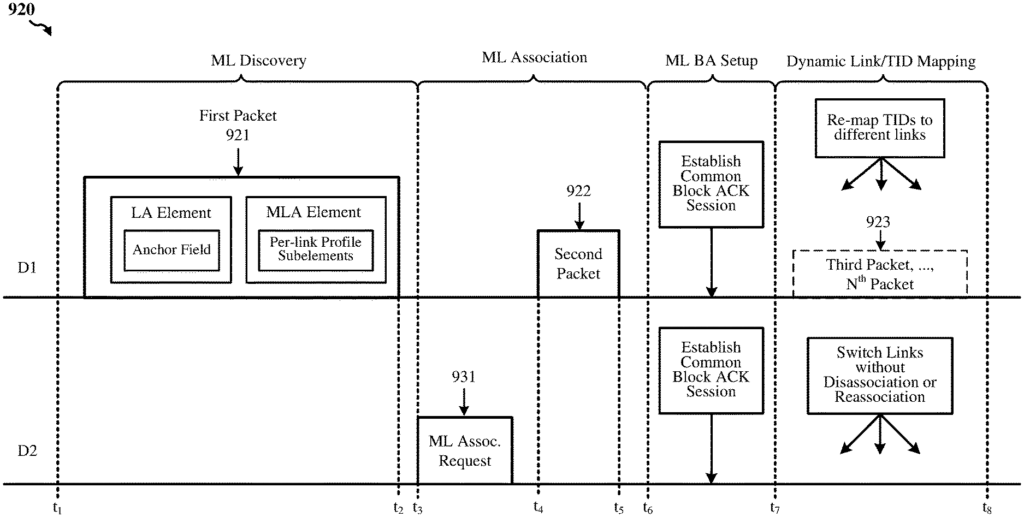
The Qualcomm Inc invention works as follows
The AP MLD transmits a frame that contains an advertising information element carrying discovery information for the first AP of the AP. The AP MLD sends a frame that includes an advertising information element that contains discovery information about the first AP. It also transmits a portion of information for each of the secondary APs in the AP MLD.
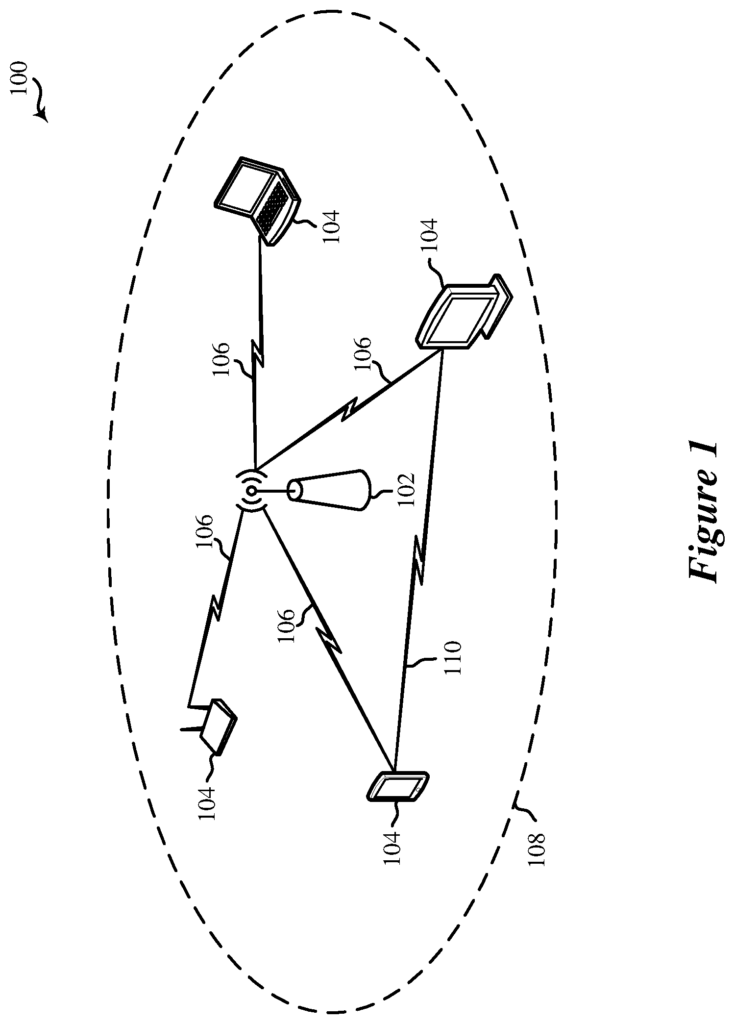
Background for Multi-link communication
The systems, methods, and devices disclosed in this disclosure have multiple innovative aspects. No single aspect is responsible for all the desirable characteristics.
One innovative aspect” of the subject matter described herein can be implemented in a wireless communication method. In some implementations the method can be performed by a multi-link access point device (MLD) and includes generating a framework by a primary AP associated with a communication link associated with the AP Multi-Link Device (MLD), the AP Multi Link Device further including one of more secondary APs that are associated with one of more respective secondary communications links of APMLD and transmitting the fram on the first communication connection. The frame can include an advertising element containing discovery information about the first AP in the AP MLD. A first portion may contain discovery information regarding each secondary AP within the one or multiple secondary APs. And a second section may carry common attributes for the one of more secondary APs within the AP MLD. In some implementations the method can also include the first AP receiving a directed request for a probe from a STA of a STA-MLD on the first communication channel, and then transmitting the frame based upon the received directed request. The directed probe request can request discovery information, operational parameters, capabilities or an operating class from each AP in the AP-MLD. The directed probe request can also include capabilities, operating parameters or an operating class for each STA in the STA MLD.
In some implementations, “the method” may also include associating a STA MLD to the AP MLD based, at least in part, on the information about the association, and communicating with a STA MLD over one or both of the primary communication links or secondary communication channels based on that association. In some cases, the method can also include establishing a shared security context between a medium access control service (MAC-SAP), endpoint, of the AP-MLD and a second MAC SAP, endpoint, of the STA-MLD, where both the first and second MAC SAP endpoints are used to communicate via the first communication link as well as the one or two secondary communication links.
In some instances, the method can also include dynamically reaffiliating the at least one TID with a second group of communication linking that includes either the first communication link, or one or more secondary communications links, and transmitting an Add Block Acknowledgement (ADDBA) frame including a field carrying the indication of the reaffiliation. In certain instances, the method can also include dynamically reaffiliating at least one traffic identifier (TID) with a second communication link group that includes either the first communication or one or two secondary communication links. The first group is different from the second communication link group, and sending an Add Block Acknowledgement (ADDBA), frame that contains a field indicating the reaffiliation.
In some implementations the frame can also contain a field called a “first identifier” (ID), which contains a unique identifier for one or both AP MLDs with which the first AP has been associated, or a secondary AP from the one or multiple secondary APs. In some cases, the frame can also include one, two, or three second ID fields. Each field in the second ID fields carries at least one link identifier identifying a secondary AP from the one, two, or three secondary APs, or an MLD identifier identifying the first AP-MLD. Each link identifier from the first link identifier to the one or two second link identifiers can be used to associate one or multiple traffic identifiers with a communication link between the AP MLD, and STA MLD for a block acknowledgment session. In some cases, the first part may include one- or more sub-link profiles, with each sub-link profile indicating discovery information for the corresponding secondary AP from the one- or more-secondary APs that is associated with the respective secondary communication link. The second part may include a MLD common field or element indicating common attributes shared by the secondary APs of the secondary APs.
In some implementations, the sub-elements of each link profile may include either capability information or information about operating parameters of a secondary AP corresponding to one or more of the secondary APs. The capability information can indicate HT, VHT, HE, HE 6GHz Band, or EHT. The operating parameters information can include HT parameters or VHT parameters or HE parameters or EHT parameters. It may also include EDCA, MU EDCA, UORA, TWT, FILS, SR, MU EDCA, MU EDCA, MU EDCA, MU EDCA, MU EDCA, MU EDDA, MU EDCA, MU EDCA, MU EDCA, MU EDCA, MU The discovery information may include one or more of the following: an operating class, a wireless band, or a BSSID for the corresponding AP. The absence of a specific capability or operational parameter in a per-link subelement may also indicate, alternatively, that the capability or parameter of a corresponding secondary AP is the same.
In some implementations, the RNR element may be included in the first part, while the multi-link attribute may be present in the second. The RNR element can indicate a transmit power, a critical upgrade, or an amendment to the IEEE 802.11 family of standards applicable for each AP. In some cases, the RNR may include one of more neighbor AP fields. Each field of one of more neighbor AP fields includes a unique link identifier that identifies a corresponding communications link of the primary communication link, or one of more secondary communication links, associated with a particular AP of the second AP. The multi-link element can include one or multiple per-link profiles, with each sub-link including one of the unique links IDs as well as one or several capabilities or operating parameters of a particular AP from the one- or-more secondary APs.
In some cases, the frame can also contain a field indicating the presence or absence each of the attributes common to the second part of the frame. The attributes common include at least one of a scheme of authentication, an address for the AP MLD or a BSSID (basic service set identifier) of the AP MLD. The frame can also include information about whether or not the AP MLD is capable of supporting simultaneous transmit-and receive (STR) across multiple links on the first communication link, or one or more secondary communications links. The frame can also indicate one or two critical updates corresponding with one or several of the secondary APs or the first AP. These updates may include a change to the operating channels, or a modification of basic service set parameters (BSS).
Another innovation of the subject matter described herein can be implemented on a wireless communications device.” In some implementations the wireless communication device can be an access-point (AP) Multi-Link Device (MLD). The MLD includes at the least one modum, at the least one processor communicatively connected to the at the least one module, at the least memory communicatively linked with the processor, and instructions which, when executed by at the least one process in conjunction with at the least one modul, cause the AP to perform certain operations. The operations can include generating a framework by a AP MLD’s first AP associated with a communication link associated with the AP MLD. The frame can include a discovery element for the first AP in the AP MLD. A first portion of the frame could contain discovery information about each secondary AP.
In some implementations the operations can also include the first AP in the AP MLD receiving, on the first communication line, a probe request directed by a STA of a STA MLD and then transmitting a frame as a probe response frame for multi-links (ML) based on the received probe request. The directed probe request can request one or more discovery information, operational parameters, capabilities or an operating class from each AP in the AP-MLD. The directed probe request can also include capabilities, operating parameters or an operating class for each STA in the STA MLD.
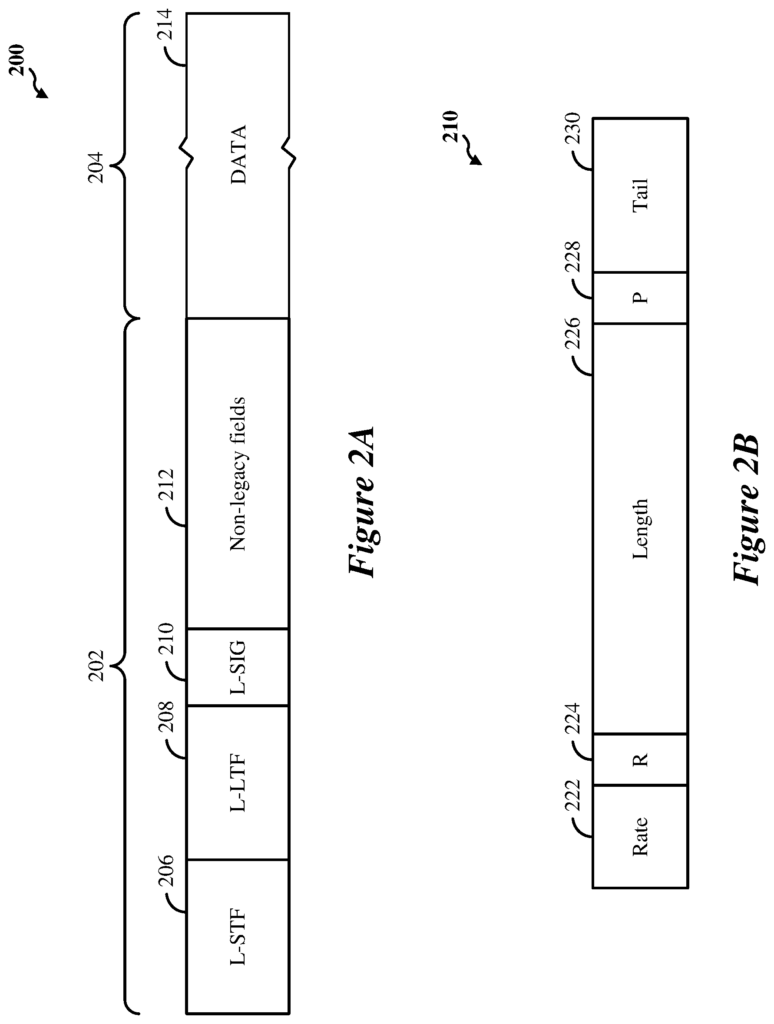
In some implementations the operations can also include associating a STA MLD to the AP MLD based, at least in part, on the information about the association, and communicating with a STA MLD over one or more communication links, either the first or secondary, based on that association. In some cases, the operations can also include establishing a shared security context between a medium access control service (MAC-SAP), endpoint, of the AP MLD, and a second MAC SAP, endpoint, of the STA MLD. Each of the first- and second-MAC-SAP-endpoints are used to communicate via the first communication link as well as the one or two secondary communication links.
In some instances, the operations can also include dynamically reaffiliating the at least one TID with a second group of communication that includes the first communication link and the one or two secondary communication links, with the BA session being based on the affiliation of the traffic identifiers (TIDs) to a first set of communication links, which may include one or both of the communication links. In certain instances, operations may include dynamically reaffiliating at least one TID to a second communication link group that includes either the first communication or one or two secondary communication links. The first group is different from the second communication link group, and sending an Add Block Acknowledgement (ADDBA), frame with a field indicating the reaffiliation.
In some implementations the frame can also contain a field called a “first identifier” (ID), which contains a unique identifier for one or both AP MLDs with which the first AP has been associated, or a secondary AP from the one or multiple secondary APs. In some cases, the frame can also include one, two, or three second ID fields. Each field in the second ID fields carries at least one link identifier identifying a secondary AP from the one, two, or three secondary APs, or an MLD identifier identifying the first AP-MLD. Each link identifier from the first link identifier to the one or two second link identifiers can be used to associate one or multiple traffic identifiers with a communication link between the AP MLD, and STA MLD for a block acknowledgment session. In some cases, the first part may include one- or more sub-link profiles, with each sub-link profile indicating discovery information for the corresponding secondary AP from the one- or more-secondary APs that is associated with the respective secondary communication link. The second part may include a MLD common field or element indicating common attributes shared by the secondary APs of the secondary APs.
In some implementations, the sub-elements of each link profile may include either capability information or information about operating parameters of a secondary AP corresponding to one or more of the secondary APs. The capability information can indicate HT, VHT, HE, HE 6GHz Band, or EHT. The operating parameters information can include HT parameters or VHT parameters or HE parameters or EHT parameters. It may also include EDCA, MU EDCA, UORA, TWT, FILS, SR, MU EDCA, MU EDCA, MU EDCA, MU EDCA, MU EDCA, MU EDDA, MU EDCA, MU EDCA, MU EDCA, MU EDCA, MU The discovery information may include one or more of the following: an operating class, a wireless band, or a BSSID for the corresponding AP. The absence of a specific capability or operational parameter in a per-link subelement may also indicate, alternatively, that the capability or parameter of a corresponding secondary AP is the same.
In some implementations, the RNR element may be included in the first part, while the multi-link attribute may be present in the second. The RNR element can indicate a transmit power, a critical upgrade, or an amendment to the IEEE 802.11 family of standards applicable for each AP. In some cases, the RNR may include one of more neighbor AP fields. Each field of one of more neighbor AP fields includes a unique link identifier that identifies a corresponding communications link of the primary communication link, or one of more secondary communication links, associated with a particular AP of the second AP. The multi-link element can include one or multiple per-link profiles, with each sub-link including one of the unique links IDs as well as one or several capabilities or operating parameters of a particular AP from the one- or-more secondary APs.
In some cases, the frame can also contain a field indicating the presence or absence each of the attributes common to the second part of the frame. The attributes common include at least one of a scheme of authentication, an address for the AP MLD or a BSSID (basic service set identifier) of the AP MLD. The frame can also include information about whether or not the AP MLD is capable of supporting simultaneous transmit-and receive (STR) across multiple links on the first communication link, or one or more secondary communications links. The frame can also indicate one or two critical updates corresponding with one or several of the secondary APs or the first AP. These updates may include a change to the operating channels, or a modification of basic service set parameters (BSS).
Another novel aspect of the subject described in this disclosure may be implemented as a wireless communication method. In some implementations the method can be performed by a multi-link wireless station (MLD) and includes receiving a frame on a communication link from a primary access point (AP). The AP Multi-Link Device may also include one or multiple secondary APs that are associated with one of more secondary communication links. The frame can include an advertising element that contains discovery information about the first AP in the AP-MLD, a portion that includes discovery information about each secondary AP, and a portion that carries common attributes for the one or multiple secondary APs.
In some implementations, a method can also include sending a multi-link association request to the AP MLD and receiving information about the association between the first AP, and one or more secondary APs in the AP MLD based upon the ML request. The ML request can include one or more capabilities, operating parameters or operating classes, as well as identification information for each STA in the STA MLD. The method can also include establishing a BA session with the AP-MLD based on the affiliation of atleast one traffic identifier with a group of communication links, which includes the first communication link and the one or two secondary communication links.
In some implementations, reaffiliating at least one TID dynamically with a second set of communication channels that include one or both of the primary communication link and the secondary communication link, where the first set of communication channels is different from the second group, may be included in the method. This can also be done by transmitting an Add Block Recognized (ADDBA), which includes a field containing an indication of reaffiliation. The method can also include sending a probe request directed to the first AP in the AP MLD and receiving a frame based, at least partially, on the transmission of the probe request directed to the AP MLD. The directed probe request can request discovery information, operational parameters, capabilities or an operating class from each AP in the AP MLD.
In some implementations the frame can also contain a field called a “first identifier” (ID), which contains a unique identifier for one or both AP MLDs with which the first AP has been associated, or a secondary AP from the one or multiple secondary APs. In some cases, the frame can also include one, two, or three second ID fields. Each field in the second ID fields carries at least one link identifier identifying a secondary AP from the one, two, or three secondary APs, or an MLD identifier identifying the first AP-MLD. Each link identifier from the first link identifier to the one or two second link identifiers can be used to associate one or multiple traffic identifiers with a communication link between the AP MLD, and STA MLD for a block acknowledgment session. In some cases, the first part may include one- or more sub-link profiles, with each sub-link profile indicating discovery information for the corresponding secondary AP from the one- or more-secondary APs that is associated with the respective secondary communication link. The second part may include a MLD common field or element indicating common attributes shared by the secondary APs of the secondary APs.
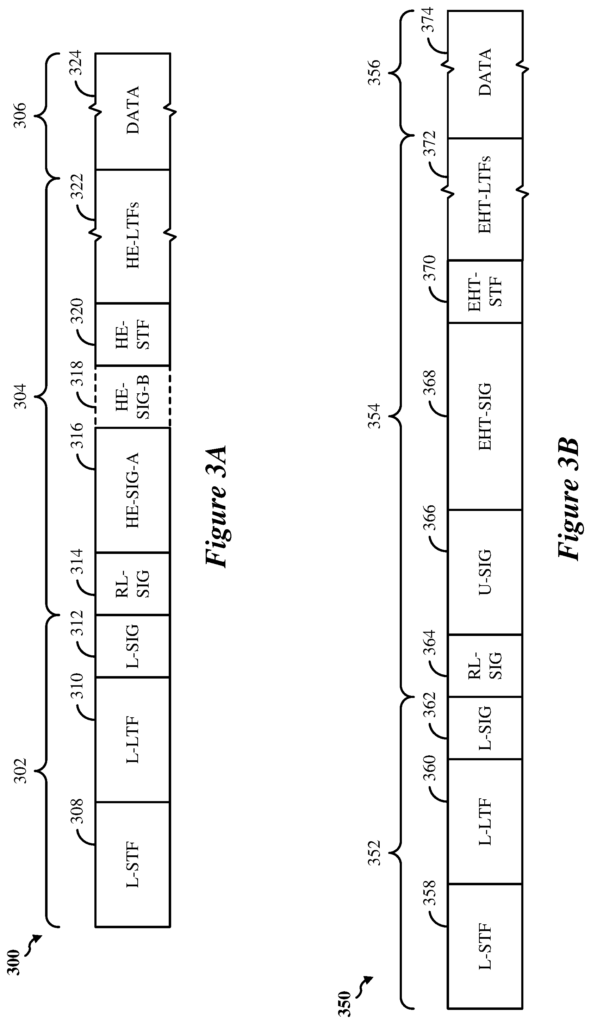
In some implementations, the sub-elements of each link profile may include either capability information or information about operating parameters of a secondary AP corresponding to one or more of the secondary APs. The capability information can indicate HT, VHT, HE, HE 6GHz Band, or EHT. The operating parameters information can include HT parameters or VHT parameters or HE parameters or EHT parameters. It may also include EDCA, MU EDCA, UORA, TWT, FILS, SR, MU EDCA, MU EDCA, MU EDCA, MU EDCA, MU EDCA, MU EDDA, MU EDCA, MU EDCA, MU EDCA, MU EDCA, MU The discovery information may include one or more of the following: an operating class, a wireless band, or a BSSID for the corresponding AP. The absence of a specific capability or operational parameter in a per-link subelement may also indicate, alternatively, that the capability or parameter of a corresponding secondary AP is the same.
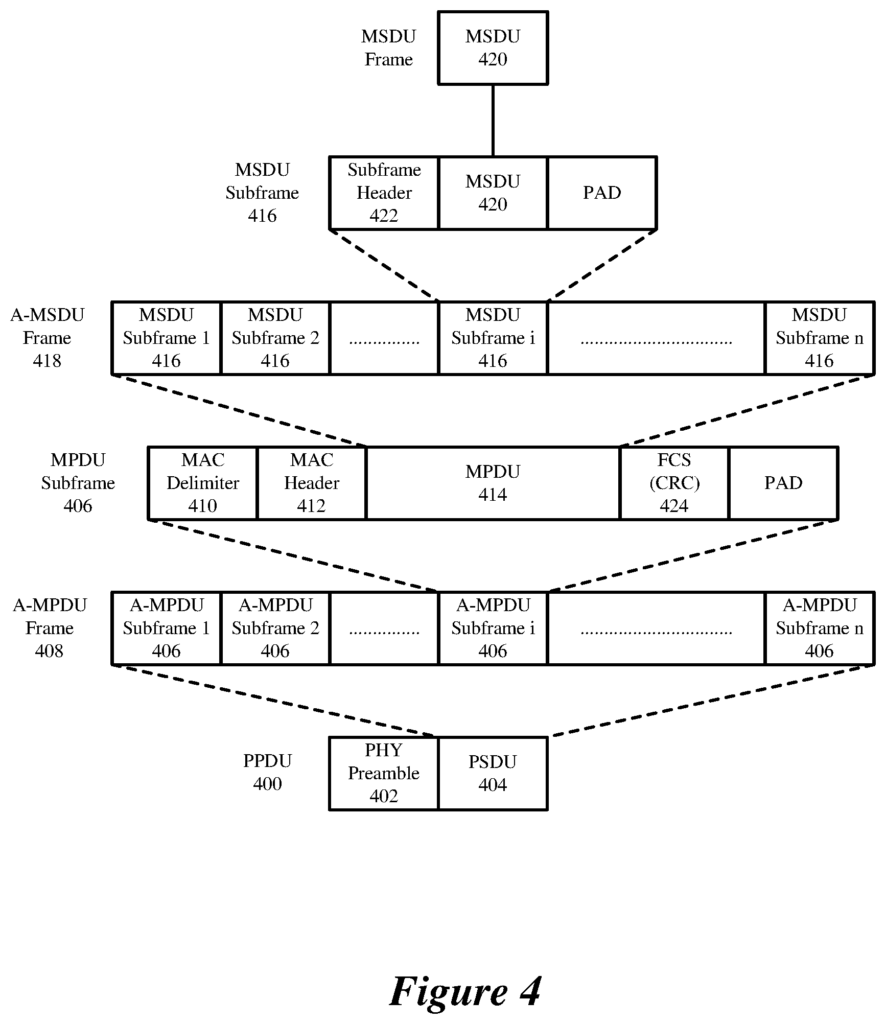
Click here to view the patent on Google Patents.
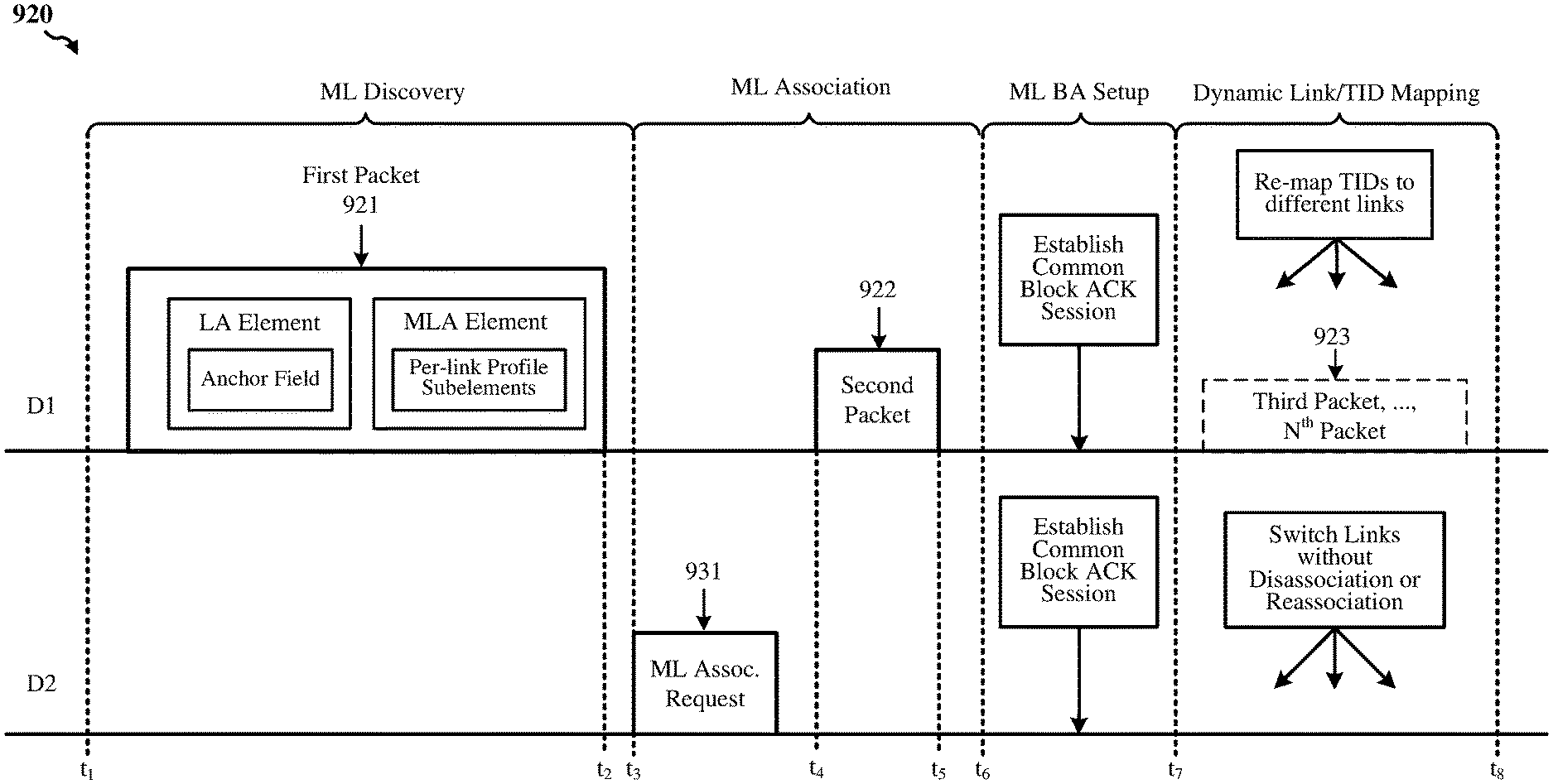
Leave a Reply